2016 Los Alamos Dynamics Summer School
Team Projects
Project Description
Abstract: Non-destructive evaluation (NDE) techniques for inspection and damage assessment of expensive and complex mechanical systems are highly sought after in the Engineering community. One such NDE technique that was developed for the aerospace industry involves spinning objects on an isolated air bearing device and observing the rate of angular deceleration, also known as a “spin-down” test. Air friction on the outside of the object provides a breaking mechanism to dissipate rotational kinetic energy and cause the object to decelerate. If components within the object were loosened or broken, additional energy would be dissipated during rotation in the form of frictional heat and the object would decelerate at an increased rate. The air bearing spin-down method is extremely sensitive and can detect small amounts of mechanical damage such as a broken wire or loosened powder.
While the spin down rate of an object can be used to assess the presence of mechanical damage, it can not necessarily specify the location of the damage. To overcome this limitation, a 2015 Los Alamos Dynamic Summer School (LADSS) engineering team developed a standalone acoustic sensor system which attempted to locate mechanical impacts from broken parts within a rotating system. This system was extremely limited in its capabilities as it suffered from low signal-to-noise levels and limited signal processing.
To overcome these limitations, a higher fidelity acoustic system that employs acoustic sensors with integrated pre-amplifiers, was procured. In this project, you will utilize this acoustic sensor hardware to develop a measurement system and methodology to detect, locate and identify mechanical damage inside a spinning test unit. This will include developing smart procedures for the placement and mounting of the acoustic sensors, implementing signal processing algorithms to extract information from the time and/or frequency domain data, and ultimately assess the capabilities and limitations of the acoustic sensor system.
Project Mentors
John Heit, Alessandro CattaneoProject Team
Nicholas Diskerud, Wesley Scott, Martin Ward
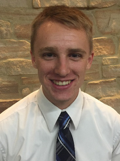 Wesley Scott – Wesley graduated from the University of Wisconsin with a Bachelor of Science in Engineering Mechanics this past spring and will be pursuing the Masters of Engineering Mechanics degree beginning this fall. Throughout his undergraduate program, Wesley took coursework related to dynamic systems such as rigid body dynamics, structural dynamics, and finite element analysis, and assisted in research concerning experimental non-linear vibration. Outside of school, he enjoys travelling, camping, biking, sailing, and playing cards.
Wesley Scott – Wesley graduated from the University of Wisconsin with a Bachelor of Science in Engineering Mechanics this past spring and will be pursuing the Masters of Engineering Mechanics degree beginning this fall. Throughout his undergraduate program, Wesley took coursework related to dynamic systems such as rigid body dynamics, structural dynamics, and finite element analysis, and assisted in research concerning experimental non-linear vibration. Outside of school, he enjoys travelling, camping, biking, sailing, and playing cards.
Project Description
In engineering disciplines, it has become accepted practice to develop numerical models to investigate the behavior of systems. For example, standards have been developed by professional societies to regulate practices for developing reliable numerical models of buildings, cars, and mechanical structures. Numerical simulations offer a cheap alternative to the design-build-test paradigm to explore new design concepts. One issue, however, is that parameters of a numerical simulation are often unknown or uncertain, and as such, predictions of the model are uncertain. Small-scale experiments can be performed to mitigate this issue, for example carrying out tensile tests to determine the Young’s modulus of a material, which can be used to inform a larger-scale numerical model. Numerical models are then used to forecast (predict) the behavior of the system at different settings. Forecasting can, at times, exercise models “far away” from conditions where they have been developed and calibrated. This calls into question the quality (and veracity) of predictions hence obtained. While the practice of calibration is omnipresent in simulation sciences, the danger of extrapolating far from calibration conditions is not always appreciated, and there is a lack of rigorous methodology to shed light on this potential challenge.
The objectives of this project are to, first, develop an example that illustrates the dangers of calibrating in one domain and forecasting in another domain and, second, start formulating a general-purpose framework to study the extent to which this could be an issue. The application is to predict the amount of payload that a spring attached to a quad-engine copter can withstand before failure (it is the forecasting domain). Small-scale experiments performed to exercise the spring will be used to calibrate the model. The project will develop simple phenomenological models, perform physical experiments, calibrate the models, integrate them into a forecasting simulation, and assess the accuracy of forecasts obtained in conditions that differ from those encountered during calibration. Technical skills acquired by working on this project will include performing vibration testing (modal analysis), developing simple finite element models whose predictions will be validated using vibration measurements, and becoming familiar with calibration methods.
Project Mentors
Kendra Van Buren and François Hemez
Project Team
Philip Graybill, Eyob Tarekegn, Ian Tomkinson
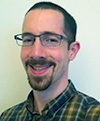 Philip Graybill – I graduated in May from Penn State University with a second B.S. in electrical engineering (EE). (I received my first B.S. in music education from Messiah College in 2005.) While at Penn State, I was a member of Eta Kappa Nu, participated in the neurotechnology journal club, and volunteered as a mentor for several first-year EE honors students. I am interested in systems that interface with the brain, and for my senior thesis, I designed a device for measuring and transmitting intracranial pressure and multiple channels of neuronal potentials in a laboratory animal. I plan to begin a PhD program in EE in the fall. In my free time, I enjoy running and reading, and I recently led a youth choir at my church.
Philip Graybill – I graduated in May from Penn State University with a second B.S. in electrical engineering (EE). (I received my first B.S. in music education from Messiah College in 2005.) While at Penn State, I was a member of Eta Kappa Nu, participated in the neurotechnology journal club, and volunteered as a mentor for several first-year EE honors students. I am interested in systems that interface with the brain, and for my senior thesis, I designed a device for measuring and transmitting intracranial pressure and multiple channels of neuronal potentials in a laboratory animal. I plan to begin a PhD program in EE in the fall. In my free time, I enjoy running and reading, and I recently led a youth choir at my church.
Eyob Tarekegn – I am senior majoring Electrical Engineering at Benedict College. As an undergraduate, I took a multidisciplinary approach to my research experience. I have participated in summer internships at Benedict College, Lawrence Livermore National Lab (LLNL) and Los Alamos National Lab (LANL). My undergraduate studies and research experiences allowed me the unique opportunity to publish promising preliminary results in The Fibonacci Quarterly and on the International Journal of Engineering and Management Research. As a result of these experiences, I have laid a solid foundation of academic knowledge and hands-on research skills upon which I intend to develop as a career by completing a PhD degree in Electrical Engineering focusing on research of Microelectromechanical Systems (MEMS), micro and nanoscale fabrication, and nanoelectronic devices. I am interested in nanotechnology because the science provides an ability to see and control individual atoms and molecules, which has a variety of critical applications in the future in creating new materials and devices in medicine, biomaterials, and electronics.
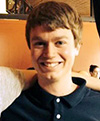 Ian Tomkinson – I am a junior studying Mechanical Engineering at Rice University in Houston, TX. I am currently doing research at the University of Texas Health Science Center Department of Orthopedic surgery conducting Dynamic Mechanical Analysis on the femurs of mice. I hope to attend graduate school in the future for robotics, control, design, or a similar discipline. Outside of classes, I enjoy basketball, tennis, soccer, and skiing.
Ian Tomkinson – I am a junior studying Mechanical Engineering at Rice University in Houston, TX. I am currently doing research at the University of Texas Health Science Center Department of Orthopedic surgery conducting Dynamic Mechanical Analysis on the femurs of mice. I hope to attend graduate school in the future for robotics, control, design, or a similar discipline. Outside of classes, I enjoy basketball, tennis, soccer, and skiing.
Project Description
In recent years, increased interest in broadband vibration energy harvesting (VEH) schemes has been a main topic of interest among researchers. One of the most successful approaches towards broadband vibration energy capture has been with bistable inertial generators. These devices leverage a nonlinear restoring force to exploit the hardening spring response to increase the resonant frequency bandwidth beyond the characteristically narrowband resonant frequency associated with conventional linear inertial generators. However, one issue with bistable energy harvesters is the presence of low-amplitude oscillations whose energy is insufficient to overcome the potential energy separatrix barrier between the competing potential wells. One method of overcoming the low-energy orbits is to modulate the separatrix barrier height by means of an external controller. In this design, a permanent magnet affixed to the tip of the inertial generator interacts with an electromagnet to generate the nonlinear restoring force. Recent studies have successfully demonstrated the augmented broadband resonant response of this type of design; however, at present the energy cost for operating the electromagnet ultimately negates the benefits of the modulation scheme.
In this project, you will develop an intelligent feedback control scheme for the electromagnet with the goal of enabling a net-positive energy capture. You will apply a meta-model of the nonlinear oscillator system subject to this feedback-control scheme to verify the augmented broadband response, as well as experimentally test the control scheme.
Example feedback control schemes of interest in this investigation are: gain-scheduling, extremum-seeking, and linear optimal control. Time-permitting, a comparative investigation among multiple control schemes may be conducted for a more exhaustive study. A mini-project consisting of determining the system damping as a function of magnet spacing (due to Faraday effects) will be used to acclimate you to the data acquisition hardware and software.
You will be using Python for the numerical simulations and experimental data post-processing. For hardware control and data-acquisition, you will be using LabVIEW. The experimental apparatus will consist of an electro-dynamic shaker along with a laser Doppler vibrometer for measuring tip displacement of the inertial generator.
Project Mentors
Scott Ouellette and Antranik Sirinosian
Project Team
Rachel Gaspar, Matthew Mascareñas, Chriss Sanpakit
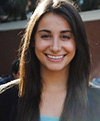 Rachel Gaspar - I will be a senior this fall 2016, majoring in Mechanical Engineering at the University of Southern California. I spent my first two years studying Environmental Engineering, so I have a great interest in the area of renewable energy. I spent a semester in a research lab constructing and testing nanoparticle technology for solar cell devices. Additionally, I have interest in aerospace and working on projects that help understand our cosmos and the fundamental characteristics of our universe. Outside of academics, I have been on USC Trojan Dance Force for two years, performing for the men’s and women’s home basketball games and I have been a part of USC Hyperloop team. Additionally, I have spent the last eight months interning in Environmental Program Support for the Metropolitan Water District of Southern California.
Rachel Gaspar - I will be a senior this fall 2016, majoring in Mechanical Engineering at the University of Southern California. I spent my first two years studying Environmental Engineering, so I have a great interest in the area of renewable energy. I spent a semester in a research lab constructing and testing nanoparticle technology for solar cell devices. Additionally, I have interest in aerospace and working on projects that help understand our cosmos and the fundamental characteristics of our universe. Outside of academics, I have been on USC Trojan Dance Force for two years, performing for the men’s and women’s home basketball games and I have been a part of USC Hyperloop team. Additionally, I have spent the last eight months interning in Environmental Program Support for the Metropolitan Water District of Southern California.
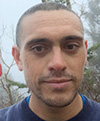 Matthew Mascarenas - is a recent graduate of Colorado State University of Pueblo where he received his BSE in Mechatronics. Mattthew is a native of Colorado where he was both born and raised. Matthew has enjoyed taking long morning runs among the backdrop of the Colorado Rocky Mountains. He is also a big fan of football and basketball. He enjoys playing and watching both sports. One of the great pleasures in Matthews life is eating. He appreciates good food and consumes plenty of it on a daily basis. Matthew is currently looking into graduate school to acquire a Master’s degree. His specific field study has not been decided.
Matthew Mascarenas - is a recent graduate of Colorado State University of Pueblo where he received his BSE in Mechatronics. Mattthew is a native of Colorado where he was both born and raised. Matthew has enjoyed taking long morning runs among the backdrop of the Colorado Rocky Mountains. He is also a big fan of football and basketball. He enjoys playing and watching both sports. One of the great pleasures in Matthews life is eating. He appreciates good food and consumes plenty of it on a daily basis. Matthew is currently looking into graduate school to acquire a Master’s degree. His specific field study has not been decided.
Chirawat (Chriss) Sanpakit - I am pursuing a Mechanical Engineering degree from the University of California, Riverside. Last summer, through a program sponsored by the Department of Homeland Security, I had the opportunity to travel to Alaska and sail to the Northern Slope aboard the Coast Guard Cutter HEALY, a 420 foot ice breaker dedicated towards research. Here, I conducted studies on Unmanned Aerial Vehicles for Search and Rescue operations in the Arctic; this eventually led me to pursue a career in robotics. Back at school, I’m also Vice President of my Chapter’s American Society of Mechanical Engineers and an undergraduate researcher in Dr. Marko Princevac’s Laboratory for Environmental Flow Modeling. Outside of school, you can find me playing tennis, the piano, or just spending time inside of a good coffee house.
Project Description
Real-world structures such as civil structures and aerospace structures are subjected to various dynamic loads, e.g., traffic, earthquakes, hurricanes, and aerodynamic loads, which are spatially local and distributed on structures. Assessment of operational performance, prediction of the dynamic responses, and prognosis of the remaining service life of the structure therefore require accurate, high-resolution measurements and modeling of these dynamic loads acting on the structure, which is extremely difficult, if not impossible, in the current state of the art and practice. The proposed research aims to develop a novel method for identification of the high-resolution, full-field loads to the structure, by using the digital video camera measurements and exploiting the recently-developed advanced computer vision and unsupervised machine learning techniques. The non-contact, remote, simultaneous sensing capability of the proposed technique should enable truly high-resolution, full-field force estimation that was not feasible before.
In this project, the students will develop a new method for identification of the full-field dynamic load on the structure. They will establish a high-resolution, full-field dynamic model using high-resolution, high-speed video camera measurements and the latest computer vision and machine learning technology. They will design and build a lab-scale bridge model, apply traffic and wind loads on the structure, and conduct experiments to validate the method. At the end of the project, the students will have solid understanding and skills of the fundamentals of structural dynamic modelling and testing, system identification, signal processing, and machine learning. They will develop a suite of MATLAB codes of the developed algorithm based on open-source computer vision and machine learning codes.
Project Mentors
David Mascareñas and Yongchao Yang
Project Team
Alex Roeder, Lorenzo Sanchez, Huiying Zhang
 Alex Roeder – I am currently in my last semester of undergraduate studies at Montana State University in Bozeman, MT pursuing my bachelor of science in mechanical engineering with a minor in aerospace and my bachelor of art in German studies. At MSU, I am a member of Tau Beta Pi, Pi Tau Sigma, and have held multiple officer positions in the German Club at MSU. I am also a member of the MSU Honors College. During my sophomore year, I had an amazing time studying abroad at Universität Stuttgart in Stuttgart, Germany. Last summer, I was an intern at Sandia National Laboratories in the Monitoring Systems and Technology Intern Center (MSTIC). It is my intention to attend graduate school in the fall for my masters of science in mechanical engineering, focusing on robotics. My specific interests lie in the mechanics of walking, walking robots, lower-leg prosthetics, and exoskeletons. In my free time, I enjoy playing ice hockey, soccer, mountain biking, billiards, reading (especially science-fiction), board/card games, and video games. I am originally from Anchorage, AK.
Alex Roeder – I am currently in my last semester of undergraduate studies at Montana State University in Bozeman, MT pursuing my bachelor of science in mechanical engineering with a minor in aerospace and my bachelor of art in German studies. At MSU, I am a member of Tau Beta Pi, Pi Tau Sigma, and have held multiple officer positions in the German Club at MSU. I am also a member of the MSU Honors College. During my sophomore year, I had an amazing time studying abroad at Universität Stuttgart in Stuttgart, Germany. Last summer, I was an intern at Sandia National Laboratories in the Monitoring Systems and Technology Intern Center (MSTIC). It is my intention to attend graduate school in the fall for my masters of science in mechanical engineering, focusing on robotics. My specific interests lie in the mechanics of walking, walking robots, lower-leg prosthetics, and exoskeletons. In my free time, I enjoy playing ice hockey, soccer, mountain biking, billiards, reading (especially science-fiction), board/card games, and video games. I am originally from Anchorage, AK.
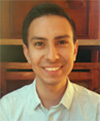 Lorenzo Sanchez - I was born and raised in Albuquerque, NM and I am a junior studying Mechanical Engineering at Brown University. I am a member of El Movimiento Estudiantil Chicana/o de Aztlán de Brown and Brown’s Society of Hispanic Professional Engineers. I enjoy playing soccer, hiking, running, and taking in the outdoors. This past spring semester I was studying in Santander, Spain at the University of Cantabria as part of the Cornell-Cantabria Engineering Exchange Program.
Lorenzo Sanchez - I was born and raised in Albuquerque, NM and I am a junior studying Mechanical Engineering at Brown University. I am a member of El Movimiento Estudiantil Chicana/o de Aztlán de Brown and Brown’s Society of Hispanic Professional Engineers. I enjoy playing soccer, hiking, running, and taking in the outdoors. This past spring semester I was studying in Santander, Spain at the University of Cantabria as part of the Cornell-Cantabria Engineering Exchange Program.
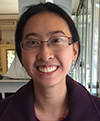 Huiying Zhang – I’m a junior majoring in applied mathematics and minoring in economics at Columbia University. I’m a part of Columbia’s student chapter of the Society for Industrial and Applied Math, AIAA, the statistics help room, Columbia Taiko, and tutoring. I would like to attend graduate school after graduating next year.
Huiying Zhang – I’m a junior majoring in applied mathematics and minoring in economics at Columbia University. I’m a part of Columbia’s student chapter of the Society for Industrial and Applied Math, AIAA, the statistics help room, Columbia Taiko, and tutoring. I would like to attend graduate school after graduating next year.
Project Description
Downtime of critical machinery can be expensive and pose a risk to safety. For example, a failure in the pump machinery that runs the liquid cooling systems for LANL’s high-performance-computing facility could lead to computing downtime and damage to expensive computing hardware. In facilities such as LANL’s HPC center, where dozens of machines may be operating simultaneously, thorough instrumentation of every machine is logistically and economically infeasible. In many cases, such a large, complex instrumentation network might require its own monitoring network. A system that could monitor an array of machines remotely from a central measurement instrumentation location would be incredibly valuable to numerous industries.
Most machine condition monitoring research focuses solely on one type of measurement, such as vibration. However, in many applications, other measurement streams are either already available or can easily be made available. These other streams include voltage and current on the common power line, airborne acoustics, and electro-magnetic fields. How to combine these multi-source data streams into a single analysis is an open-ended problem.
The focus of this research will be in answering three important questions:
- How can heterogeneous measurement data streams (i.e. different types, different sample rates, etc.) be combined and analyzed together as a whole?
- Among an array of machines, can individual machines be identified and monitored without individual instrumentation by utilizing multi-source measurements (vibration, current, voltage, acoustics, and EM) from a central instrumentation point?
- In multi-source collection and analysis, can one assess the value of individual data streams?
These questions will be answered by constructing a bench-top rotating machinery array, developing a centralized multi-source instrumentation package, performing controlled tests involving abnormal machinery behavior, and developing & applying new signal analysis tools. If successful, the team will have the opportunity to make measurements of in-service machinery at LANL.
The ability to perform large-scale monitoring using a single, information-rich measurement point would be significant for a number of applications including aircraft monitoring, automobile monitoring, smart homes, smart power grids, assembly lines, process control, manufacturing, and power generation.
Project Mentors
Dustin Harvey and Eric Flynn
Project Team
Shannon Danforth, Jaden Martz, Alison Root
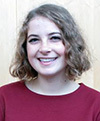 Shannon Danforth – I am a senior at the University of Portland (graduating May 2016) studying Civil Engineering. I play on the club Ultimate Frisbee Team and am involved with the Cycling Club, Tau Beta Pi, and the Society of Women Engineers. I’m also president of the American Society of Civil Engineers student chapter at the University of Portland. My current research involves predicting failure in beams using nonlinear model tracking, and I plan to attend graduate school in the fall with a research focus in structural dynamics. In my free time, I enjoy hiking, rock climbing, and reading
Shannon Danforth – I am a senior at the University of Portland (graduating May 2016) studying Civil Engineering. I play on the club Ultimate Frisbee Team and am involved with the Cycling Club, Tau Beta Pi, and the Society of Women Engineers. I’m also president of the American Society of Civil Engineers student chapter at the University of Portland. My current research involves predicting failure in beams using nonlinear model tracking, and I plan to attend graduate school in the fall with a research focus in structural dynamics. In my free time, I enjoy hiking, rock climbing, and reading
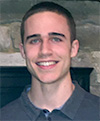 Jaden Martz – Graduated from Penn State University with his Bachelors of Science in Electrical Engineering last spring and is planning to continue his graduate studies in the near future surrounding his interests in machine learning, data analytics, and robotics. He also enjoys reading, music, and basketball.
Jaden Martz – Graduated from Penn State University with his Bachelors of Science in Electrical Engineering last spring and is planning to continue his graduate studies in the near future surrounding his interests in machine learning, data analytics, and robotics. He also enjoys reading, music, and basketball.
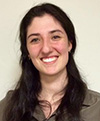 Alison Root - I am a junior studying Electrical Engineering at Case Western Reserve University. At Case, I am a research assistant, a mentor to another female undergraduate engineer, and an active member of the Swing Dancing Club. As a research assistant, I work with the Python Materials Genomics (pymatgen) library, which models and analyzes materials using Python. Other than classes, I enjoy reading (just about anything), knitting (mostly socks), and swing dancing (whenever I can).
Alison Root - I am a junior studying Electrical Engineering at Case Western Reserve University. At Case, I am a research assistant, a mentor to another female undergraduate engineer, and an active member of the Swing Dancing Club. As a research assistant, I work with the Python Materials Genomics (pymatgen) library, which models and analyzes materials using Python. Other than classes, I enjoy reading (just about anything), knitting (mostly socks), and swing dancing (whenever I can).
Project Description
Aided by the lowering costs of open-source fused deposition modeling (FDM) machines, once thought of as a simple toy for hobbyists, Additive Manufacturing (AM), also known as 3D-printing, is now quickly becoming a formidable and promising manufacturing process for the engineering community. Complex geometries and comprised of multi-materials can be shaped constructed with AM (Fig. 1) in ways that are too costly, time consuming, or difficult impossible to fabricate using traditional manufacturing methods. For a Design Engineer to take full advantage of AM, they must be able to design and qualify parts with desired properties. This project will focus on developing a sensing system for monitoring the quality and predicting the mechanical properties of additively manufactured parts using self-sensing structural materials.
Project Mentors
Alexandria Marchi and Adam Wachtor
Project Team
Ben Katko, Derya Tansel, Jennifer Yasui
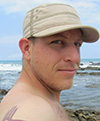 Benjamin Katko - I’ve grown up in the shadow of Los Alamos National Laboratory and always knew that this small mountain town held a certain breed of people. It is only fitting that I follow in the footsteps of these world renowned giants. I chose mechanical engineering after a growing process that led me from the passenger seat in a stunt plane over Lake Wakatipu, New Zealand to the passenger seat of 747 descending into Costa Rica. Let’s say that growing up in Los Alamos bends your perspective of what it means to have a functioning roof over your head. I decided to pursue my mechanical engineering degree near home and currently am a junior at New Mexico Institute of Mining and Technology. I’ve recently been inducted in the Tau Beta Pi Engineering Honor Society and am focused on a multi-disciplined approach to engineering. The design team I am part of is working on developing a supercapacitor that acts as the structure of the device in which it powers. I’m excited to have been accepted into the Dynamic Summer School and I’m amped to work with other exceptional students from across our country!
Benjamin Katko - I’ve grown up in the shadow of Los Alamos National Laboratory and always knew that this small mountain town held a certain breed of people. It is only fitting that I follow in the footsteps of these world renowned giants. I chose mechanical engineering after a growing process that led me from the passenger seat in a stunt plane over Lake Wakatipu, New Zealand to the passenger seat of 747 descending into Costa Rica. Let’s say that growing up in Los Alamos bends your perspective of what it means to have a functioning roof over your head. I decided to pursue my mechanical engineering degree near home and currently am a junior at New Mexico Institute of Mining and Technology. I’ve recently been inducted in the Tau Beta Pi Engineering Honor Society and am focused on a multi-disciplined approach to engineering. The design team I am part of is working on developing a supercapacitor that acts as the structure of the device in which it powers. I’m excited to have been accepted into the Dynamic Summer School and I’m amped to work with other exceptional students from across our country!
 Derya Tansel - I am a rising junior studying Electrical Engineering at the University of Florida. I am the College of Engineering Relations Chair for the Society of Women Engineers (SWE) as well as a Peer Mentor at the Center for Undergraduate Research Board of Students (CURBS). I am also a member of the Institute of Electrical and Electronics Engineers (IEEE). After getting my degree from the University of Florida, I plan to go to graduate school. When I’m not studying for my classes, you can find me knitting, playing the piano, or playing volleyball.
Derya Tansel - I am a rising junior studying Electrical Engineering at the University of Florida. I am the College of Engineering Relations Chair for the Society of Women Engineers (SWE) as well as a Peer Mentor at the Center for Undergraduate Research Board of Students (CURBS). I am also a member of the Institute of Electrical and Electronics Engineers (IEEE). After getting my degree from the University of Florida, I plan to go to graduate school. When I’m not studying for my classes, you can find me knitting, playing the piano, or playing volleyball.
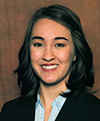 Jennifer Yasui - As of June 2016, I will have completed my bachelor’s degree in Civil Engineering with a minor in Materials Science and Engineering from the University of California, Davis. In the fall I will be starting graduate school and working towards earning a master’s degree in Structural Engineering. I have been an active member of the American Society of Civil Engineers and served as the Project Manager for the Steel Bridge Team which was ranked nationally in 2013 and 2014. Over the last four years I’ve gained invaluable research experience working for Professor Kenneth Loh on structural health monitoring, smart materials, advanced sensors, nanocomposite assembly, networked system integration, and signal processing/prognostics. During the summer of 2014 I had the incredible opportunity to take my research abroad and work at the National Taiwan University and National Center for Research on Earthquake Engineering. The Los Alamos Dynamics Summer School will facilitate my career goals by balancing my research contributions to structural design engineering with my own intellectual curiosity.
Jennifer Yasui - As of June 2016, I will have completed my bachelor’s degree in Civil Engineering with a minor in Materials Science and Engineering from the University of California, Davis. In the fall I will be starting graduate school and working towards earning a master’s degree in Structural Engineering. I have been an active member of the American Society of Civil Engineers and served as the Project Manager for the Steel Bridge Team which was ranked nationally in 2013 and 2014. Over the last four years I’ve gained invaluable research experience working for Professor Kenneth Loh on structural health monitoring, smart materials, advanced sensors, nanocomposite assembly, networked system integration, and signal processing/prognostics. During the summer of 2014 I had the incredible opportunity to take my research abroad and work at the National Taiwan University and National Center for Research on Earthquake Engineering. The Los Alamos Dynamics Summer School will facilitate my career goals by balancing my research contributions to structural design engineering with my own intellectual curiosity.
Project Description
Often in mechanical testing for system qualification, there is a mismatch between the service environment and the testing environment in terms of the test duration or severity. When a mismatch exists, it is usually because the time available for testing is much shorter than the service lifetime, or the facility available for testing has insufficient capability for reproducing the mechanical insults expected during the service life. Test engineers have adopted common approaches for circumventing these shortcomings. In the former case, a common approach is to increase the severity while shortening the duration, using fatigue analysis. In the latter case, a common approach is to consider the response of a surrogate structure, using the shock response spectrum (SRS), to determine an equivalent testing environment that is within the capabilities of the testing apparatus. In all approaches, a damage model is implicitly or explicitly assumed.
In this project we will explore the application of material-specific damage models for the case of a deficiency in the capability of the test facility to apply the level of severity expected in the service environment. The events of interest are usually very short in duration and have high mechanical input levels compared to the bulk of the expected service life. Example events include rocket stage separation shock, airplane landing shock, and rail car linking. Using a material-specific damage model, we will develop an equivalence between an expected, but unachievable service environment and discrete repetitions of an achievable test environment. We will validate our approach using experiments with simple materials and compare the results to an industry-standard, SRS-based, material-agnostic approach.
Project Mentors
Stuart Taylor & Colin Haynes
Project Team
Milo Prisbrey, Jacob Senecal, Manik Sethi
Milo Prisbrey - I am a senior studying Mechanical Engineering at the University of Utah. Currently as I’m finishing my B.S. and preparing to begin graduate school I’m a member of the Precision Engineering and Nanotribology Laboratory where I’m involved in research on ultrasound directed self-assembly of nanostructures. Outside of the classroom and laboratory environment I enjoy rock climbing, weight lifting, cooking, and playing video games.
 Jacob Senecal - I am a senior studying Mechanical Engineering at Montana State University. At Montana State I am very involved with Engineers Without Borders, and I lived in Kenya for part of the previous summer working on water and sanitation projects. I am also Vice President of Pi Tau Sigma, and I serve as an Engineering Ambassador for the college. Currently, I work in the Fluids and Computations Lab, where I assist in developing models, and numerical methods to study interesting problems! Outside of school I love sports, archery, and I am always working my way through a good book.
Jacob Senecal - I am a senior studying Mechanical Engineering at Montana State University. At Montana State I am very involved with Engineers Without Borders, and I lived in Kenya for part of the previous summer working on water and sanitation projects. I am also Vice President of Pi Tau Sigma, and I serve as an Engineering Ambassador for the college. Currently, I work in the Fluids and Computations Lab, where I assist in developing models, and numerical methods to study interesting problems! Outside of school I love sports, archery, and I am always working my way through a good book.
 Manik Singh Sethi - I am a sophomore studying Mechanical Engineering at Franklin W. Olin College of Engineering in Needham, MA. Here, I work on our SAE MiniBaja team, specifically the drivetrain design, fabrication, test, and servicing. Alongside that, I am a part of the entrepreneurial organization on campus, the Foundry, and the student government. My research work so far has been in designing a landing gear for bird sized UAVs to perch on a multitude of surfaces like tree branches, building edges, and telephone poles as well as in preliminary processing of shock response spectra to analyze vibrations from pyro-kinetic shock in spacecraft. Outside of class, my time is spent listening to music, working out at the gym, cooking, or looking at cars.
Manik Singh Sethi - I am a sophomore studying Mechanical Engineering at Franklin W. Olin College of Engineering in Needham, MA. Here, I work on our SAE MiniBaja team, specifically the drivetrain design, fabrication, test, and servicing. Alongside that, I am a part of the entrepreneurial organization on campus, the Foundry, and the student government. My research work so far has been in designing a landing gear for bird sized UAVs to perch on a multitude of surfaces like tree branches, building edges, and telephone poles as well as in preliminary processing of shock response spectra to analyze vibrations from pyro-kinetic shock in spacecraft. Outside of class, my time is spent listening to music, working out at the gym, cooking, or looking at cars.
Selected Guest Lectures
- Scott Ouellette - Energy Harvesting
- Stuart Taylor - Wireless Sensor Nodes
- Eric Flynn - Ultrasonic Non-Destructive Evaluation
- Jim Wren - Thinking Telescopes
- Chris Stull - Information Gap Analysis
- Yongchao Yang - Video Motion Magnification
- Kendra Van Buren - Multi-intelligence Data Analysis
- Nick Lieven - Aerospace Systems
- Matthew Smith - Inland Waterways
- Amy Larson - Computer Vision
- Garrison Stevens - Verification and Validation
- Reinard Friedel - LANL Satellites



